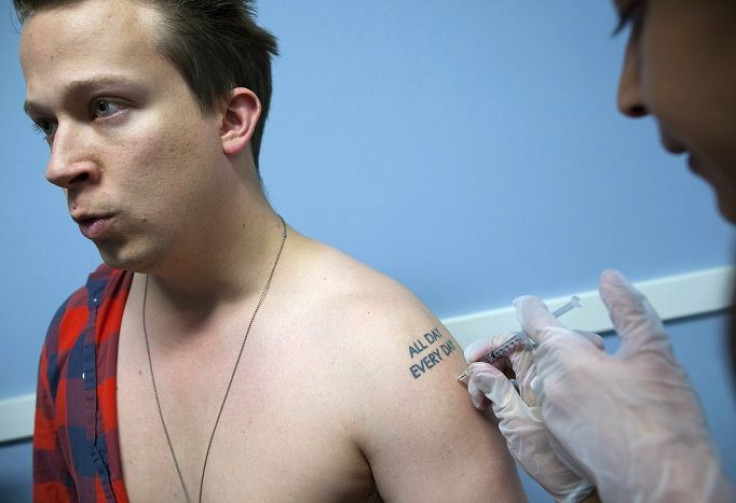Severe H3N2 Flu Season Fears Cause Some Local Vaccine Shortages, But No Widespread Drain

In the midst of what public health officials are calling a moderately severe flu season, a run on flu shots may be causing isolated local shortages, but it doesn’t seem to be creating a dangerous drop in vaccine supply.
According to the U.S. Centers for Disease Control and Prevention, vaccine manufacturers had projected they would produce about 135 million doses of flu vaccine for the 2012-2013 season. But as of Jan. 4, more than 128 million doses have been distributed.
Since then, demand has picked up after the CDC issued an advisory saying this flu season was shaping up to be moderately severe.
“We’re hearing of spot shortages here and there around the country,” says Tom Skinner, a spokesman for the CDC.
That’s not particularly surprising, Skinner says, given that it’s January and there’s a moderate to severe flu season that’s sending a lot of people to the doctor’s office to roll up their sleeves.
“The bottom line is, people may have to check around several places to find a flu vaccine,” Skinner says.
It’s hard to tell where a shortage may strike. The Washington Post reported on Thursday that some people in the D.C. area were having trouble getting their shot. The Lansing State Journal reported that some local pharmacies in Michigan were running out of the vaccine.
But there do not seem to be any widespread shortages. In New York City, “there is no vaccine shortage, and we do not anticipate one,” a spokesperson for the city’s health department said in an email.
Flu vaccine providers have been selling out of some versions of the vaccine but insist they have enough supply to meet the demand. MedImmune, which makes a nasal spray flu vaccine, told CNN that it has a surplus of 620,000 extra doses. Vaccine makers Sanofi Pasteur and Glaxo Smith Kline also said they were confident their supply should cover the demand.
“The greater issue is that less than 50 percent of the U.S. population gets vaccinated each year,” GSK vice president Leonard Friedland told CNN.
For best results, you may want to contact your local pharmacy or doctor ahead of time to see if they’re stocked up on the vaccine. You can find flu vaccine providers near you at flu.gov.
Because every flu season is different, the flu vaccine changes every year. Experts from the CDC, the U.S. Food and Drug Administration and the World Health Organization study virus samples collected from around the world to try to figure out which strains are most likely to crop up in the next flu season.
For the 2012-2013 flu season, the WHO recommended that manufacturers use three strains of virus in the vaccine: an H1N1 strain and an H3N2 strain of influenza A virus, and an influenza B virus.
The latest data shows that the influenza A subtype H3N2 seems to be dominating the viral landscape this season. The subtypes of the flu virus are named for the types of proteins on their outer coats. H3N2 carries a form of the protein hemagglutinin called H3, and a form of the protein neuraminidase called N2.
Symptoms associated with seasonal H3N2 influenza are similar to other kinds of seasonal flu: fever, cough, runny or stuffy nose, a sore throat, muscle aches and headache.
Past flu seasons have shown that H3N2 can be associated with a more severe outbreak. In the 2003-2004 flu season, a new subtype of H3N2 known as the “Fujian flu” was the culprit behind an atypically severe flu season. But H3N2 isn’t anything like a “super-flu.” Because the strain was new, vaccines for that season provided only partial protection, providing an opening for the virus to spread.
But this season, the vaccine looks to be a good match for H3N2, as far as the CDC can tell. And since flu season can last until as late as May, it’s still not too late to roll up your sleeve.
© Copyright IBTimes 2024. All rights reserved.











